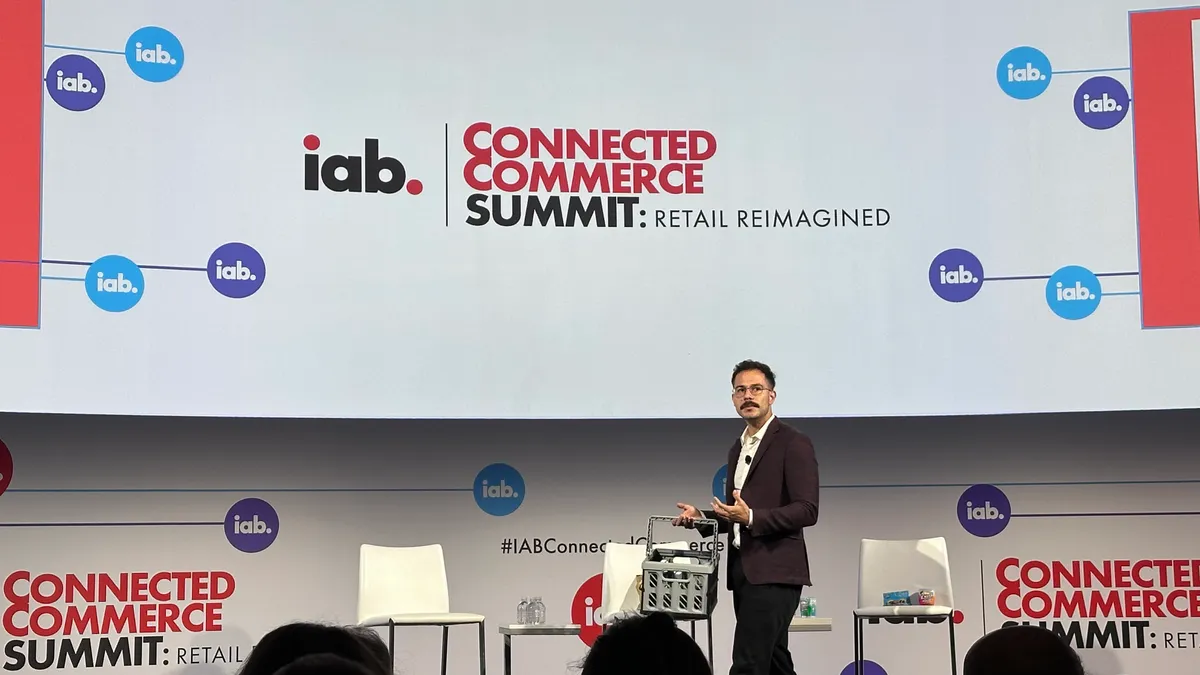NEW YORK — The industry’s call for standardized retail media metrics has been heard. On Wednesday, the Interactive Advertising Bureau released industry definitions and measurement standards for in-store retail media during its Connected Commerce Summit in New York City.
The standards, created in collaboration with IAB Europe, aim to ensure transparency and consistency across retailers, brands and CPGs as well as provide guidelines for ad formats and store zones, Jeffrey Bustos, IAB’s vice president of measurement addressability data, said in an interview.
The IAB created in-store standards that are compatible worldwide and worked to ensure they were similar to the guidelines it released last year for retail media measurement in online environments.
In-store retail media as a whole is vast, consisting of digital screens, printed and static ads, audio, connected shopping and experimental ads, IAB outlined. However, non-digital in-store retail media — printed and static ads as well as experiential offerings like product sampling — are not included in IAB’s in-store standards.
Whichever digital, in-store retail media format retailers use, though, these standards are meant to outline best practices while not being too “prescriptive,” Bustos said, noting that flexibility was incorporated to allow for future growth and innovation.
One of the key components of IAB’s in-store standards was determining what constitutes an impression. According to IAB’s report, “Opportunity to see is the best proxy available for a viewable ad impression in the In-Store Environment.”
“[G]iven that we were looking at privacy first solutions and standards, and we were bringing Europe into the mix, and we’re kind of looking future-forward, we really focused on ‘opportunity to see’ as a minimum standard,” Bustos said. He added that IAB felt it should be up to the retailer to determine the difference between “opportunity to see” and “likelihood to see” in terms of impressions.
Regardless though, for impressions to count, and — no matter the form — must be within the view of a person.
Ad serving metrics were another aspect of retail media measurement IAB tackled and standardized. However, unlike impressions, ad serving was less of a debate and more about nailing down definitions. Bustos noted that anyone who works in media would likely say the definitions are common sense, but the report includes them to ensure industry-wide consistency.
Incrementality and incremental sales lift is another complex area of in-store retail media that IAB cleared up in its standards.
Aside from sorting through technical terminology and measurement methods of in-store retail media, the report aims to make sure everyone is speaking the same language — and that includes breaking down the physical retail space itself, Bustos said.
IAB divides any retail space into five sections — “exterior to store,” “entrance and out of category,” “checkout,” “in aisles” and “other” — and outlines where each “store zone” could place retail media.
“None of these are new terms,” Bustos said about IAB’s standardization report, “but what is new is that these terms have never been combined within this environment in this specific way.”













